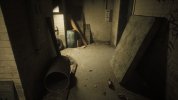You are using an out of date browser. It may not display this or other websites correctly.
You should upgrade or use an alternative browser.
You should upgrade or use an alternative browser.
Unreal Engine 5, [UE5 Developer Availability 2022-04-05]
- Thread starter mpg1
- Start date
DavidGraham
Veteran
Dynamic probs and destructible/moveable objects won't be Nanite, Nanite simply doesn't support them. In the Matrix City demo, Epic had to swap Nanite car meshes with regular meshes once any form of visual damage is applied to them, this is of course is time and memory intensive work for any developer, which is why not everyone will do it.I wouldn't say that. In some rocky places, yes. In other places rather not. I don't think nanite is used everywhere in Robocop
That hasn't been the case since ... IIRC 5.2 ... when Nanite got programmable rasterization support. Whenever Fortnite got Nanite as of course everything needs wobble/destruction there. It still does not support skeletal meshes but most destruction and similar effects are done with world position offset (i.e. vertex shader type things), not skeletons. City sample could be updated to do that as well now if desired.Dynamic probs and destructible/moveable objects won't be Nanite, Nanite simply doesn't support them. In the Matrix City demo, Epic had to swap Nanite car meshes with regular meshes once any form of visual damage is applied to them, this is of course is time and memory intensive work for any developer, which is why not everyone will do it.
I haven't played through Robocop but my impression was more they were limited by the quality of assets they had time to create more than anything. Turns out there's a lot of good photoscanned rocks available, but not necessarily as much of everything else yet.
cheapchips
Veteran
It does sort of beg the question of how to approach car crashes with the current version of UE and more time. You could have tremendous amount of engine detail when body panels start popping off.
@Andrew Lauritzen do you know if Epic plans to release their Talisman demo in Fortnite for us to try it ?
davis.anthony
Veteran
I wouldn't say that. In some rocky places, yes. In other places rather not. I don't think nanite is used everywhere in Robocop.View attachment 11052
Easy to cherry pick poor shots, this is what it generally looks like:
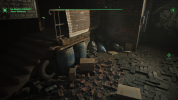
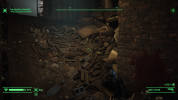
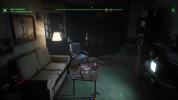


There are very few games that rival it in terms of geometric complexity.
Robocop is a weird game to me. In screenshots it looks so good yet I played the game on pc and thought it just looked ok. I ended up refunding it after an hour. I think it's the animation that made it look worse or maybe it was just playing it on a pc monitor. Sitting that close may have made it look not as good?

[GDC 2024]CPUを使わずにGPUが自発的に描画するパイプライン「Work Graph」がDirectX 12に正式採用
米国時間2024年3月18日に行われたGDC 2024の技術セッションにおいて,AMDとMicrosoftは共同で,DirectX 12の新機能「Work Graph」を発表した。本稿では,Work Graphとは何で,どのような利点をもたらすのかを解説したい。
www.4gamer.net
Someone managed a sneak peak of AMD's presentation on Work Graphs and they revealed a demo of it running with UE5 Nanite at the end of the session!
they said they will release the project files, so it won't be in Fortnite but the UE5 editor@Andrew Lauritzen do you know if Epic plans to release their Talisman demo in Fortnite for us to try it ?
I have no specific knowledge of the plans for that demo so don't take my post here as anything official. That said, I can't imagine why they would have bothered to do it in UEFN if they had no plans to release it at some point (i.e. whenever retail UEFN/fortnite is on the appropriate engine version).
It was said that Robocop was leagues ahead (Plural form) of Alan Wake 2. However, rubble and rocks are usually only what stands out with much more geometry. The rest is not leagues ahead. The truth is that Robocop also looks like this.Easy to cherry pick poor shots, this is what it generally looks like:
View attachment 11053
View attachment 11054
View attachment 11055
View attachment 11056
View attachment 11057
There are very few games that rival it in terms of geometric complexity.
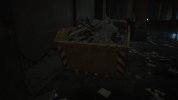
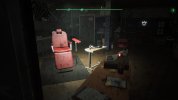
Alan Wake 2 is also detailed

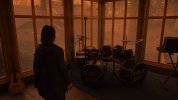
Last edited:
cheapchips
Veteran
It was said that Robocop was leagues ahead (Plural form) of Alan Wake 2. However, rubble and rocks are usually only what stands out with much more geometry. The rest is not leagues ahead.
Alan Wake 2 is also detailed
Yes. It was my comparison.. It wasn't about which looked better overall. It was that Nanite allows one game to have a level of detail the other doesn't, even though AW2 probably has more geometric detail than any other non-Nanite game.
davis.anthony
Veteran
It was said that Robocop was leagues ahead (Plural form) of Alan Wake 2. However, rubble and rocks are usually only what stands out with much more geometry. The rest is not leagues ahead. The truth is that Robocop also looks like this.
Alan Wake 2 is also detailed
Again with the cherry picking the worst shots of Robocop you can find and some of the best of Alan Wake 2.
I'll say it again, in terms of geometric detail, RoboCop is on another level compared to Alan Wake 2.
For hand-picked assets the geometry level is much higher than in Alan Wake 2 but not across the board. Robocop only uses Nanite to a small to medium extend for assets/objects. Robocop is not the best Nanite example.
In many places it is not much more detailled than many other quality games. If you take tessellation even old Crysis 2 can have more geometry in places like some walls than Robocop. Walls are mostly 2D in Robocop which Nanite could do 3D easily.
Apart from the hand-picked parts in Robocop Avatar draws much more geometry than Robocop.
In many places it is not much more detailled than many other quality games. If you take tessellation even old Crysis 2 can have more geometry in places like some walls than Robocop. Walls are mostly 2D in Robocop which Nanite could do 3D easily.
Apart from the hand-picked parts in Robocop Avatar draws much more geometry than Robocop.
Last edited:
cheapchips
Veteran
Apart from the hand-picked parts in Robocop Avatar draws much more geometry than Robocop.
Avatar was another example I'd have pulled out actually, in response the the original post. It boasts an impressive amount of scene complexity taking advantage of current hardware. It's rocks and tree trunks would still look better if it was using a Nanite equivalent.
It's not hand-picking to pull out nice looking rocks etc in a UE5 game. The whole point is the use of high poly object is more or less arbitrary. When objects aren't as detailed it's mostly about production/art, not the tech.
For clarification, I don't have the technical knowledge to look through the code, but what I have done is experiencing it myself and comparing results.Do you have the knowledge to back up such a statement? The source code is public, why don't you go ahead and point us to the parts that you consider "improper" and explain why rather than make baseless claims.
I did open up an UE5 project with Nanite that consisted of a couple of Nanite rendered trees. I've went upclose to the leaves (as I'm aware it kicks in if the geometry is bigger than a pixel) and then compared the performance of the mesh shader path turned off and on (There's a console command for that called r.Nanite.MeshShaderRasterization and there's one for virtual shadow maps as well) When comparing on and off, I've not seen any improvement in frame rate. I've also compared it in bigger projects like the City Sample and from different perspectives.
The next evidence of why I believe Mesh shaders contribute nothing to Nanite is by comparing already released games with different architectures. For example, we know the 2070 Super and the 5700XT perform roughly similar in most games which are not using next gen features like that. And we also know the mesh shading path is activated automatically when the game is based on UE5.1 or later. So all it takes is a good look at the benchmark data we have for current titles. If we do, we can notice that the 2070S and the 5700XT (the AMD card doesn't support mesh shading) perform equally. If mesh shaders were truly used, the 2070 Super would pull ahead of the 5700XT. We can see this behavior in Alan Wake 2. By the way, a patch has been released that significantly sped up the vertex shading path in AW2, but the Pascal generation of GPUs still perform a lot worse compared to their Turing counterparts using mesh shaders. So you can't say the vertex shading path has been neglected as they patched it up quite significantly over time. Mesh shaders are just much more efficient and faster.
Anyway, these are the reasons why I believe mesh shaders are not implemented to their full potential. Anything wrong with my logic and methodology?
Last edited:
And like UE5 the lighting systems is outdated in Avatar, too. Today it is easy to make games look good with a direct sun shinning on surfaces. But when there isnt one bright light source these games falling back to graphics from 10 years ago. Here is a prime example from Robocop from the first "open world" mission:Avatar was another example I'd have pulled out actually, in response the the original post. It boasts an impressive amount of scene complexity taking advantage of current hardware. It's rocks and tree trunks would still look better if it was using a Nanite equivalent.
It's not hand-picking to pull out nice looking rocks etc in a UE5 game. The whole point is the use of high poly object is more or less arbitrary. When objects aren't as detailed it's mostly about production/art, not the tech.

I find this a huge problem. You have these highs and lows in one game. Like realtime graphics and rendering videos from 20 years ago...
davis.anthony
Veteran
For hand-picked assets the geometry level is much higher than in Alan Wake 2 but not across the board. Robocop only uses Nanite to a small to medium extend for assets/objects. Robocop is not the best Nanite example.
There are a lot of areas in Alan Wake 2 where geometry is lacking.
Especially in the first 2 chapters of Saga.
In many places it is not much more detailed than many other quality games. If you take tessellation even old Crysis 2 can have more geometry in places like some walls than Robocop. Walls are mostly 2D in Robocop which Nanite could do 3D easily.
Crysis 2 in DX11 mode is no where near Robocop in geometry.
Apart from the hand-picked parts in Robocop Avatar draws much more geometry than Robocop.
Avatar is another game that needs a huge bump in geometry as it has a lot of visible polygon edges.
Similar threads
- Replies
- 103
- Views
- 13K
- Replies
- 0
- Views
- 610
- Locked
- Replies
- 260
- Views
- 16K


